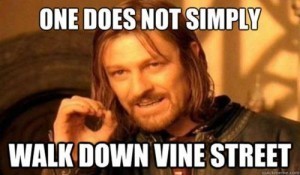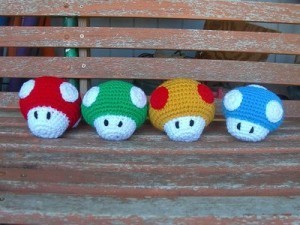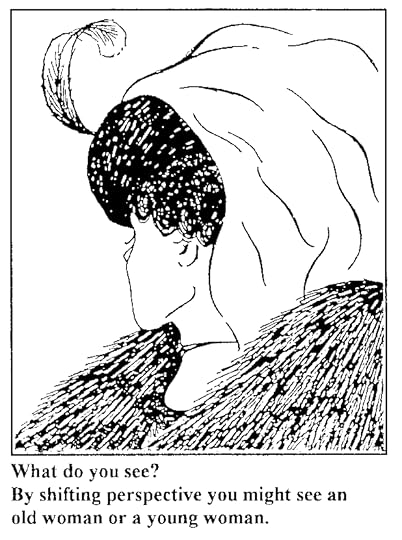Jane Friedman's Blog: Jane Friedman, page 190
May 20, 2012
Love Letter to Cincinnati (#2)
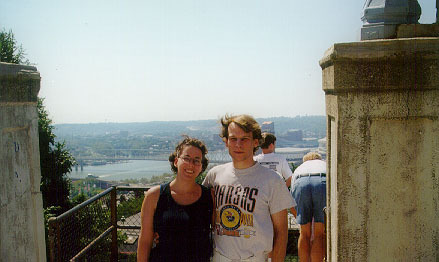
This is me in 1999, posing with M, my boyfriend at the time. He visited me a few times in Cincinnati before we moved in together. On his first visit, I took him to the Mt. Adams neighborhood, with magnificent views of the city.
Note: Read the first installment in this series.
After I graduated college, I packed up my 1985 Ford Thunderbird with all my belongings and drove to Cincinnati to start my job with F+W Publications.
I didn’t know anyone in the city except my boss, Greg. He served as my only anchor for many months, so much so that when I needed someone to drive me to the airport on Christmas Day, he was the only person I could ask. (He agreed and was even cheerful about it.)
My first year in Cincinnati, I lived in a furnished studio apartment in the Hyde Park neighborhood, recommended to me as the safe part of town. To make up for that bad advice I was given, I now discourage newcomers from moving there if they have any adventure left in them at all. Hyde Park is where you live if you have a lot of money, like to run, and have decided against the suburbs.
During those early years, if anyone ever visited me, my procedure was the same: Show them Mt. Adams—a San Francisco-style neighborhood with views of the city—then do something on the river, e.g., go to Montgomery Inn or take a cruise on BB Riverboats.
Today, no one visits me, but when they do, I feel at a loss as to what to show them. It’s not that Cincinnati doesn’t have worthwhile things to see, but its riches are best discovered through daily living, not tourism. Yes, there’s an increasingly vibrant downtown, and we’ve got Fountain Square, but for me, the enjoyments come from being local. Perhaps I’m too well-traveled—and that undercuts my perception of Cincinnati’s wow-features—but unless you live here, you probably can’t appreciate the combination of (1) low cost of living (2) high-quality urban life and arts community and (3) dramatic absence of typical city annoyances (traffic, crowds, etc).
[Note: I might have to take back that entire paragraph. This past weekend saw the grand opening of Smale Riverfront Park. That, plus The Banks development, promise to dramatically reshape Cincinnati's downtown. See all my photos here.]

Smale Riverfront Park
It took 10 years of working in Cincinnati for me to truly live in it. I moved to Over the Rhine (OTR), which is believed to be the largest urban historic district in the United States. It contains the largest collection of Italianate architecture in the country, and is an example of an intact 19th-century urban neighborhood.
OTR is the first neighborhood I’ve ever lived in where I’m not constantly getting in my car to leave it. All my favorite places—and many necessities—are within walking distance.
Unfortunately, the large bulk of my time in Cincinnati was grudgingly spent in Clifton, due to a longterm relationship with (and later marriage to) a UC doctoral student. Clifton is a sprawling university neighborhood, and even though I work there now and don’t mind it, the only fond memories I have of living in Clifton are my long-distance runs outside of it.
My most symbolic Clifton moment was when, on a Halloween evening, my boyfriend, M, answered a knock at the door only to find an adult male with a tall boy in a paper bag and a miniature American flag in his hand. He asked if he could use our phone. (This was before cell phones were commonplace.)
M looked at me, and I shook my head vigorously (the man at the door couldn’t see me), but M was sweet, naive, and from another country. Ultimately this guy asked M to give him a ride to the gas station where he was “late for work.” It was about a 5-minute drive away. M agreed.
Fifteen minutes later, M hadn’t returned … which turned into thirty minutes, then one hour. I called my best friend to ask what she thought I should do. She came over immediately with her husband. By that time, 90 minutes had passed. My friend started to go through some logical steps: Let’s call the gas station, let’s call the district station …
Just as she was about to convince me to call the police, M pulled up. I ran to the driveway and was hugging him through the open car door window before he had even turned off the engine. He acted like nothing had happened—he was merely annoyed at being duped into playing chauffeur all over the west side of Cincinnati based on a convoluted story about a diabetic mother who desperately needed meds and groceries.
I think that story is still getting told around Clifton to naive university students. Almost daily, as a university employee, I receive e-mail alerts about the latest criminal activity in the neighborhood. (See memes below from UC students.) I always tell the suburbanites, who ask about safety in Over the Rhine, that I’ve experienced far more criminal activity in Clifton than I ever have in OTR.
I wish I had more time to spend in OTR and downtown Cincinnati, to watch the continuing transformation of the neighborhood that may eventually become a big tourist destination. I think that’s beginning to happen (see Lonely Planet and New York Times), plus downtown resident population is up 12%. In case you’re curious, the video below gives you a good feel for my neighborhood + downtown.
I wonder if the magic will still be here when I return, and how it will feel to become an outsider.
May 18, 2012
4 Ways to Immediately Improve Your Book Marketing Efforts
When I see bad book marketing out in the wild, I wish I could do something productive to help that author (or sometimes publisher!) see how they’re wasting their time.
What is bad book marketing? It’s whenever I receive:
A tweet from a total stranger asking me to look at their book
An e-mail from a total stranger asking me to look at their book
A Facebook message from a total stranger asking me to look at their book
And so on—I think you get the idea.
Here are 4 ways to immediately improve your book marketing efforts. Perhaps you should save the link to this post, and offer it up via Facebook, Twitter, or e-mail to anyone engaging in time-wasting activity as described above.
1. Use your website for hard selling. Do not lean on social media for hard selling. Social media typically works best for long-term awareness efforts, relationship building, audience development, and general networking. It is not terribly effective for repeatedly telling people, in your own voice, over and over again, “Buy my book.” All of the information about why people might like your book—along with the hard-hitting sales pitch—should be on your website. If you don’t have your own website where you control the content and presentation, it’s next to impossible to have a successful book marketing campaign.
2. Brainstorm a list of all the meaningful relationships you have—people who you can count on to read your e-mails. Divide the list into three groups: (a) people who would probably like to be alerted to your new work, e.g., old classmates or coworkers, (b) people who have significant reach or influence with your target readership, e.g., a blogger or established author, and (c) your existing and devoted fans who may be willing to spread the word about your new work to their friends and connections. For Group A, write a brief announcement and include a link to your website for all the book details. For Group B, write a brief, personalized note to each person about your book promotion efforts, and offer 1-3 concrete ways they could help you—e.g., tweet about the book on a specific day, excerpt the book on their blog/site, run a Q&A, etc. For Group C, write a brief, general note asking for support in any way they feel comfortable, and provide examples of what that support might look like. If there are any influencers in Group C, consider moving them to Group B and writing something more personalized. Note: So few authors do any of this. Taking the time to write personalized e-mails will dramatically increase support from your network. You shouldn’t try to market and promote your book on your own; it takes a village, as they say.
3. Brainstorm a list of all the gatekeepers to your readers with whom you do not have a relationship yet—specific individuals and specific websites/blogs. For example, if you write romance, then popular romance review blogs would act as a gatekeeper. Do those blogs accept guest posts? Can you contribute to their community in some way? If you want to grow your readership, you’ll have to work beyond your existing network. Find a way to help gatekeepers—rather than demanding something of them—and you’ll find the whole process more successful AND enjoyable.
4. Invest in professional design and presentation for all marketing and self-promotion materials. This includes your website, your author photos, your book cover (the No. 1 book marketing tool, whether print or digital), your business cards, your Twitter avatar, your Facebook cover photo, etc. If you appear professional, that’s half the battle. Amateur design hurts you tremendously in the long run—especially when it comes to gatekeepers and influencers. Sorry, but appearance matters, and a professional presentation shows that you take yourself and your work seriously.
What do you think are some other concrete ways to immediately improve book marketing efforts? Share in the comments.
May 16, 2012
When Self-Publishing Is More Useful As a Marketing Tool
The turning point of my long-term publishing plans came when I realized I have very little in common with author Joanna Penn. Have you heard of her?
I started following Joanna on Twitter because she always shared great writing links, but I also began to follow her self-publishing story. She wrote a novel, released it as a 99-cent download, and reached 10,000 downloads after a few months.
Joanna blogged through the whole process and shared all of the details from editing to marketing. She worked really hard to pull it off, and as I added self-publishing to my own long-term publishing plans—plans that included books also published through large traditional publishers—I had no qualms about working hard.
For my self-publishing projects I marked up several drafts, lined up cover designers, sent out review copies, booked blog tours, and worked through spreadsheets listing everything else I had to do. The book received praise from experts, and my brother-in-law, a designer by trade, put together a sharp cover.
For all that fell into place, I dreaded opening those spreadsheets listing everything I had to do. You’d have thought I was being forced to slap a kitten each day.
I’ve always loved writing. Releasing my first commercially published book was a highlight of my life. Why did I hate self-publishing?
After processing my reaction to both self-publishing projects, I read Joanna Penn’s About Page one day. The light flickered on for me: Joanna had a business consulting background. She wasn’t just creative and dedicated to writing; she had the skills you need to run a successful business, which is a huge part of the self-publishing process.
Even the smallest publishing house provides more support than you’ll receive when self-publishing.
Self-publishing means that authors become small publishing companies. They aren’t just writing and editing. They need to manage a complex and draining process. There is layout, design, development editing, proofreading, retail planning, and marketing.
Doing all of these things well enough to sell more than fifty copies to my friends calls for a set of skills that many creative writers like myself simply don’t possess. Even if I had $5,000 on hand to hire designers, editors, and publicists, I’d turn myself into a publisher. Having published through large publishers, small publishers, and now independently, I’d much rather surrender a chunk of my royalties to an experienced publisher—heck, almost any publisher—so that I can pursue my creative calling.
Not sure about my take here? Read what Catherine Howard has to say:
We’ve seen time and time again that the self-publishers who enjoy consistent success are those who treat self-publishing like a business they’ve started up. They act like entrepreneurs, and make like their book is their first product—which it is.
I’m releasing my next book with a relatively small publisher that focuses on my niche, and the experience has been far better for me than self-publishing. They couldn’t pay out an advance, but I’m guaranteed a standard royalty. In return, they have edited the book, designed a cover, written marketing copy, developed a marketing plan, sought out endorsers, and reached out to retailers.
I could lament the non-existent advance, or I could focus on this: they’ve heavily invested in publishing my book after I paid them zip.
Best yet, I wrote the book and have been very involved in the design and marketing process, but they have managed the whole thing. Knowing that someone else is keeping the publishing process on track removes a tremendous burden from my mind and makes it far easier to develop creative marketing ideas.
I used to think of self-publishing as the only alternative to publishing with a large house. Now I’m committed to working with both large and small publishers. In addition, there are some strong subsidy publishers that provide excellent support to authors who have the means to pay for their services.
Now for my caveat: I haven’t ruled out self-publishing completely.
I’ll still create e-books that readers can download for free if they subscribe to my e-newsletter. E-books are also a great promotional tool. Even just selling a 10,000 word e-book on Amazon for 99 cents is a simple way to introduce readers to my work. It’s like I’m getting paid to advertise, but I have no illusions about building my career on these self-published books.
For example, each April 1, I release a prank e-book that my readers can download for 99 cents on Amazon (this year and last year). These e-books, which lovingly poke fun at the Christian subculture and my own quirks, are not a way to make money. They’re simply a way to introduce readers to my writing—even if I lose a few subscribers each year who miss the prank and think I’ve lost my mind.
Self-publishing is a great tool to keep in your publishing plans, but for creative writers such as myself, it is far more useful as a marketing tool. I don’t plan on writing another e-book until next April 1 because I don’t have the chops or desire to run my own small publishing company. When I hammer out 3,000 words in a morning, I hit a high that leaves me chattering about all of my ideas to my wife. When I run my own publishing company, she hears sobbing noises from my office.
I’m grateful that there’s a Joanna Penn in the world. I’ve learned a lot from her about publishing. The greatest lesson she taught me is that I’m not like her and that large and small publishing companies exist because there are authors like me who just want to write.
May 15, 2012
How Do You Answer “What Are You Working on Next?”

Mary-Jane reading
What are you working on next? is a question that always takes me by surprise (which is why it’s good advice for writers to have an answer prepared). Words gurgle in my throat. If I can’t change the subject, I mumble something about an essay or short story or blog post.
I want to say My Call to the Ring’s release date is not until September 2012.
It was November 2006 when Deirdre Gogarty handed me pages of true stories she’d written about Ireland, family, and her hard-fought battles to become a champion boxer. In an instant, I agreed to co-write her memoir. The chance of a lifetime had arrived. Like a pugilist who’d trained for an opportunity to fight, I’d been flexing my finger muscles for years. I immersed myself in our collaboration.
But there was a tradeoff—I lost volumes of family time.
Two months after I agreed to co-write Gogarty’s memoir, I sped to Women & Children’s hospital to welcome my granddaughter, Mary-Jane, into the world. She wailed and cooed. I rushed back to work.
And—pfffft!—she turned five.
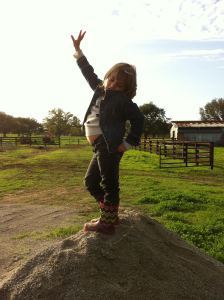
Mary-Jane
Her brother, Milas, clocked nine.
My mother, eighty-five.
And I no longer recognize my hands when I type.
What next?
I’ve been sparring with guilt for missing many of my grandchildren’s milestones. But I’ve concluded it was worth it to hand down examples of sacrifice and perseverance—Deirdre’s and mine—to teach them to follow their calling in life.
Now I’m back to work on those essays and short stories and blog posts. But I’m also taking numerous, long walks with my dog on the family farm while pondering clichés about time.
The way it never stops.
Or turns back.
The way it flies.
And since it often gets lost,
I wonder where it hides.

Nip-Nip hiding
May 14, 2012
The Best E-Publishing Resources
This week I’m teaching a 101 course on e-publishing with Writer’s Digest. I’ve taught it several times in the past year, but each time, I have to carefully update it. New services pop up, standards change, and things you couldn’t do before suddenly become possible—and vice versa. It can be a challenge even for me to keep up.
With that in mind, I thought I’d share what I consider the most trusted resources on e-books and e-publishing. If you think I’ve missed a critical resource, please let me know in the comments.
TeleRead. Sometimes it’s a firehose of information, but it’s helpful for quick updates on new devices, important launches, etc.
Digital Book World. This site is geared toward publishing insiders, but has plenty of material suited to authors. The more technically advanced author may want to check out on-demand webcasts related to e-book production. Or, start with Carolyn McCray’s helpful series on selling on Amazon.
The Book Designer (Joel Friedlander). Some of the best how-to information on self-publishing and e-publishing geared to indie authors. Very even-handed, service-oriented and comprehensive.
EBW Knowledge Base. Helpful resource that can explain the basics in plain English.
Step-by-step conversion guide for EPUB/MOBI starting with a Word doc (or something like Word). This requires that you download and use Calibre.
Creating & Formatting Documents for E-Readers Using EPUB. Similar to the above, just another way of doing it.
Liz Castro. This is for more technically advanced authors. Good how-to for anyone not afraid of coding who wants to delve into EPUB.
Resource list from Digital Book World. A good jumping off point for other legit resources, including special info for those working with InDesign.
And, separately, here are authors who have been successful e-publishing on their own. I list them as valuable and often essential resources, just keep in mind they can have strong opinions that aren’t shared by everyone.
JA Konrath. Try starting with: How to Make Money on E-Books.
Bob Mayer. Try starting with: How Do Covers for a Series Work?
John Locke. He’s written an ebook on how you can be as successful as him.
Cathryan Howard. Try starting with: How to Sell Self-Published Books: One at a Time.
Finally, you may want to check out my past posts on e-publishing:
10 Questions to Ask Before Committing to Any E-Publishing Service
Groundbreaking Tools for Creating E-Books
And don’t forget my class this Thursday that offers the 101 on how to publish your e-books
May 11, 2012
Distinguishing Between Straight-Up Advice and Paradigm Shift
A couple weeks ago I wrote a column for Writer Unboxed, “Should You Focus on Your Writing or Platform?” In short, I said it’s a balancing act, but there are times when you should probably emphasize one over the other.
It generated more than 100 responses, many insightful and valuable, from working writers, established authors, editors, and agents. My colleague Christina Katz was one of the last to comment. Here’s part of what she said.
This post really makes me chuckle … I wonder how much time folks spent reading and chewing on and commenting on and spreading the word about a post ABOUT platform rather than actually spending any amount of time actually cultivating and working on their own platform?
I am a person who does not distinguish between writing, selling, specializing, self-promotion, and continuing ed, and also a person who sees all of these things as essential and necessary to my writing career success. …
For me, there is no separation. Writing is the center. (If you read The Writer’s Workout, you saw the diagram.) But it’s all critical. There’s nothing to debate.
I’m (mostly) in the same boat as Christina. I find it impossible and irrelevant to distinguish between writing activities and platform building activities. My approach is far too holistic.
So why did I write a post splitting them up?
Because most writers don’t and CAN’T see them as one activity. They’re still asking questions that show they need some concrete ideas on how to manage what they perceive (and what can be) a very real split in one’s life.
There may be nothing to debate for people like Christina and myself, but that doesn’t mean it’s not a very real problem for writers to address until the struggle resolves itself.
Or until writers undergo a paradigm shift.
Briefly defined, a paradigm shift is “a radical change in personal beliefs, complex systems or organizations, replacing the former way of thinking or organizing with a radically different way of thinking or organizing.”
I can write (or speak) on the platform topic forever, but ultimately, I can’t change your mind about marketing/selling being inseparable from writing until you have your own experience or insight that validates what I’m saying. Or, I might convince you logically, but you might not feel it.
And in my opinion, this is why so much is written about platform. People are still figuring it out, trying to find what feels right, but they haven’t experienced the paradigm shift where it all starts to make sense, and they’re no longer torn on how to handle it.
Here’s one area where I partly disagree with Christina: If you commented on my post, you were participating in a community of writers, and making yourself seen in that community, and that’s indeed a part of your platform … where you’re active, the relationships you build, the places where you’re known. So make sure you’re spending time and energy on places that matter most to you and your work. Eventually it won’t be blog posts related to author platform … unless of course you’re trying to be a platform expert.
And: writing may or may not be your center. For the past two years, teaching has been my center. Much of my writing spins out of things I teach. I create instructional materials and modules, I refine them through extensive research and reading, and I put things in formal writing usually as a last step, and even then, only when I have sufficient motivation (e.g., an article assignment that pays well).
That’s because formal writing is sometimes the worst possible way for me to help someone. A conference workshop, Twitter chat, or webinar is often a better way for me to inform and engage. The topics I write and teach on can change overnight.
But it’s true that writing is the center for many of you. Just not all. Frankly, I’ve been advocating writers have yet another paradigm shift regarding writing and books. I see books as just another medium—and not always the best medium—to entertain and inform, but that’s another post for another day.
May 9, 2012
What Can Stop Your Career From Ever Starting

Aurelio Asiain / Flickr
Today’s guest post is by Emily Latham. Emily has been one of my students this past academic year at the University of Cincinnati and will graduate soon. In response to Jonathan Fields’ new release, Uncertainty , she wrote the following. The honesty was so remarkable that I asked her if she’d allow me to share her thoughts here.
I wasn’t sure if I should laugh, cry, slap myself on the forehead, or just nod erratically in agreement to this book. I relate to the fear of uncertainty, worry of judgment, and the suppression of creativity—and to the overall inclination to just play it safe.
I also couldn’t help but notice (not judge) that a lot of my peers act the same way in the face of uncertainty and judgment.
“I feel the fear of uncertainty stinging clear.” Those are lyrics to one of my favorite songs, “Drive” by Incubus. I don’t think that I’ve ever thought about how much uncertainty plays a role in how I make decisions. The dark unknown is something that humans are not very comfortable with, and sadly I am not exempt. We are constantly searching to define the unknown. Not many people are complacent with not knowing.
What makes uncertainty hard for me is the possibility of failure. Not to succeed is a very hard reality to deal with. Will I be able to rebound if I do fail? Do I need to change my life goals if I do not succeed? Does failure mean I am doomed?
Those questions then lead to: If I do fail, how am I going to deal with telling people I failed? What are friends, family, coworkers going to think? What kind of judgments will people be passing on me? The fear of uncertainty certainly stings clear in my mind when thinking about the future.
I commonly deal with this fear of uncertainty and public scrutiny in two ways:
Try with minimal effort.
Don’t tell anyone until you succeed.
The age-old minimal effort deal is something that I have perfected. My peers also employ this method. It looks something like this:
I only studied for 30 minutes for the test.
I wrote this response right before class.
This class is stupid.
These are things I hear a lot from my peers, and I find myself doing it too. Studying a week for a test, or actually working on papers in advance, or admitting that classes are not stupid is probably the first step to recovery on this one. I tend to put in minimal effort to minimize the fear of failure. If you only try a little bit, then the failure isn’t so great. Furthermore, you make it known to everyone that you aren’t trying, so when your C- or B is handed back to you, it was because you didn’t try—not because you weren’t good enough.
The fear of trying your hardest and being rejected is ego crumbling. But how can I really improve if I don’t put myself out there?
The real mantra should be: “I don’t know the outcome, but I’m going to use whatever outcome there is to make it better.”
With the other tactic I employ—don’t tell anyone until you succeed—no one has to know I have failed, and better yet no one can judge me for it. But, as Fields discusses, I don’t have a certainty anchor. With no one to rely on, or without input, I might as well fail before I even try. It’s important put the ego and fear aside to learn to lean on people.
I don’t have all the answers—and clearly, after writing this, I should be thinking that I don’t need all the answers. My anchors won’t have all the answers either, but without support, facing the fear of uncertainty is a lot harder.
May 8, 2012
It’s OK to Leave Stuff Out. In Fact, It’s Better

Superdog by Laura Diehl / deviantART
When I was in 5th grade, my mom spent hours working on a middle-grade novel. These were the days before word processing, so she used an old Smith Corona electric typewriter. It became a fixture on the dining room table.
Eager to follow in her footsteps, I conceived my own novel. I bought a spiral-bound notebook and wrote on the cover, “The Adventures of SuperDog.” On the first page, I wrote, “Chapter 1.”
And so I began to describe how SuperDog came into existence. I mean, it was important to explain the hows and whys of how such a creature came to be, right? This took at least 1 page.
Then I started thinking of all the other questions his existence raised. How did he manage to buy and supply himself with food on a consistent basis? How did he come to have all of his resources? Where did his magical bone come from? What events led him to getting his powers? This consumed at least Chapters 2 and 3, from what I recall.
I was obsessed with explaining as logically and clearly as possible the ins and outs of this creature, and getting all the day-to-day questions settled, so that readers wouldn’t be confused.
It was pretty boring—so boring, in fact, I stopped around Chapter 6 or 7. I can’t even remember what the story conflict was. I was too obsessed with the proper setup.
I was too young to know it at the time, but the stuff I was writing was really prep work—character background, setting/environment details, world-building rules—stuff that I needed to know to write the REAL story, but not something I should dump in the first chapters.
My inclination with SuperDog is the inclination most writers have when approaching their first manuscripts: I’ve got to show how this world came to be. I need to put in this explanation of why this person is how they are now. I need to show what everyday life is like. I need to … ZZzzzzz.
It’s OK to leave stuff out. You have to, because if you don’t, you’ll never get to the real story you want to tell. The how-it-all-came-to-be can be related as you go—and some of it can create tension, e.g., “Why IS Jeb so nervous whenever he’s around Lucy? When will we learn what happened between them?”
Or: Think of it this way. When you first meet someone new, what do you tell them about yourself? What do they need to know right away? And what will you save for later? You don’t have long to convey your story. A lot must be summarized and left to the imagination—and it’s better that way at the start.
May 7, 2012
Love Letter to Cincinnati (#1)

by Kevin Pogo Curtis
I’ve visited New York City more times than I care to remember—always for work. Sometimes I enjoy it, sometimes not. But I always know for sure: I’m not part of those who live and work in that city.
Living in Cincinnati these past 14 years means I’m invisible in most publishing industry circles—not so unlike the company I once worked at, deemed “The Midwest Publishing Empire” by my first boss. At first I thought the moniker was a charming endearment. Later I realized it was an underhanded compliment.
But my life as a Midwesterner has made me sympathetic to writers outside the NYC publishing gates, who wonder why they can’t break in. It made me a good publisher for Writer’s Digest … that plus my own natural tendency to encourage people.
It was never my intention to remain in the Midwest for as long as I have. In fact, I hated Cincinnati for nearly a decade, and couldn’t think of anything worse than being from Indiana and living not more than a few hundred miles from the place where I was born. It’s a peculiar disease for us Americans, to think it a failure not to move away from what we know. As a twentysomething, I wanted nothing more than to live in Europe—where I’d stayed 6 months during a study abroad—and to be done with the uncultured and ignorant USA.
It’s like all young people to think this way—to imagine that the place where we come from is stupid and beneath everything else. Eventually you realize that all places are rather the same. Or, people are the same. You just find the right circles where you can be accepted or make a difference. The rest is just details.
It took a long time to accept that I’m a Midwesterner at heart. I want to be friendly and helpful. I’m not eager to talk about myself. I prefer a laid-back, unpretentious lifestyle. While these are not qualities unique to the Midwest, I don’t reliably encounter those environments elsewhere.
Cincinnati has been an unintentional home for me. I never meant to stay here for long, and at first I was always in an apartment or neighborhood that I partially despised.
Eventually I corrected that. I have an apartment I consider the happiest place on earth, where I wake up in the morning and feel happy to exist in such a beautiful room, with wood rafters, tall windows, and cool air silence, the city alive in the distance.
At my lowest points, Cincinnati has provided a cure in its core infrastructure. I drive out to Interstate 71 or 75, where I can go north or south, and drive in a continuous loop, using the 275 city bypass, or a quick 4-lane lateral for shorter periods of despair.
I drive circles around the city for calm, for familiarity, to remember I’ve had bad times before, and always found a better time after.
It used to be that when I’d drive into the city on 74 East, or on 71/75 North, there was nothing worse than realizing I had come home to Cincinnati. But after I overcame the melodrama of youth (and the desire to throw away everything I knew—bad only because it was familiar), then greeting the city from 74 (the wooded hills) or 71/75 (the cut in the hill & the river) became magical.
A couple years ago, for the first time, I bought original artwork from a Cincinnati artist who was producing a variety of bridge images. They all could easily be interpreted as Cincinnati bridges over the Ohio River, but were not clearly symbolized as such. Yet in my heart, these bridges represent the ones I’ve crossed now hundreds of times while thinking about what has been, what is, and what will be. They remind me of transition—a period of growing up.
Cincinnati is currently undergoing its own “growing up”—a renaissance in its historic residential quarter, Over the Rhine, where I now live. It is gorgeous and mostly undiscovered by the greater public. Even the people who’ve lived in Cincinnati all their lives don’t clearly recognize what’s happening. Soon, the world will recognize it. Only I will have moved onto another place …
May 4, 2012
Does Quality Always Win?
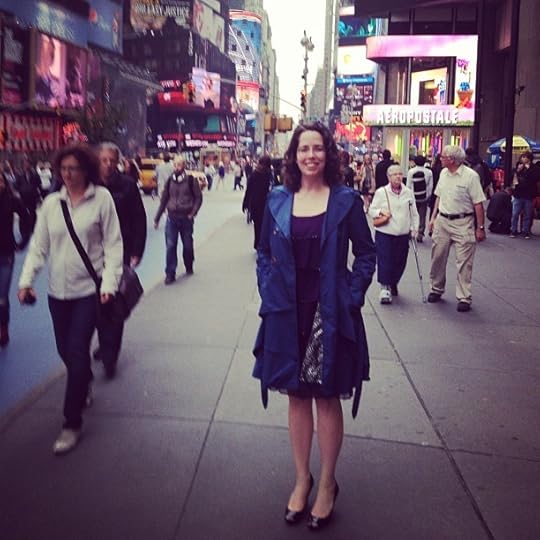
Jane at 2012 National Magazine Awards (NYC)
I had the very good fortune of attending this year’s National Magazine Awards in New York City. Even though I’m not yet officially on staff of the Virginia Quarterly Review, I was able to tag along and see if any of the three nominations would turn into wins. (Sadly, not this year.)
The final award of the evening was given to Time, as Magazine of the Year. The editor who came up to accept said, “We will win in the long run. Quality wins.”
What did he mean by that?
I’m not really sure. Presumably “we” refers to the magazine industry, and magazines will win because they put out quality material unlike … who? Bloggers like myself? Online-only publications? Atavist? Salon? Huffington Post? Flipboard? Netflix? Google? Amazon? Apple? Wikipedia? Cable television? All of the above?
What comes to mind is a recent column by David Brooks. He has a unique argument to make about why we ought to move away from the “competition” mindset that’s prevalent in our culture:
Instead of being slightly better than everybody else in a crowded and established field, it’s often more valuable to create a new market and totally dominate it. The profit margins are much bigger, and the value to society is often bigger, too.
[We're] talking about doing something so creative that you establish a distinct market, niche and identity. You’ve established a creative monopoly and everybody has to come to you if they want that service, at least for a time.
That probably hasn’t provided an ounce of clarity, has it?
But I sure would like to know why a magazine might feel threatened in such a way that it must defiantly insist, “Quality wins!” Would it not be more valuable, as Brooks points out, to establish a distinct market, niche, and identity? (Especially if you’re media agnostic about it?)
I hope everyone will discuss in the comments, especially your thoughts on whether quality always wins.
Jane Friedman
- Jane Friedman's profile
- 1882 followers



